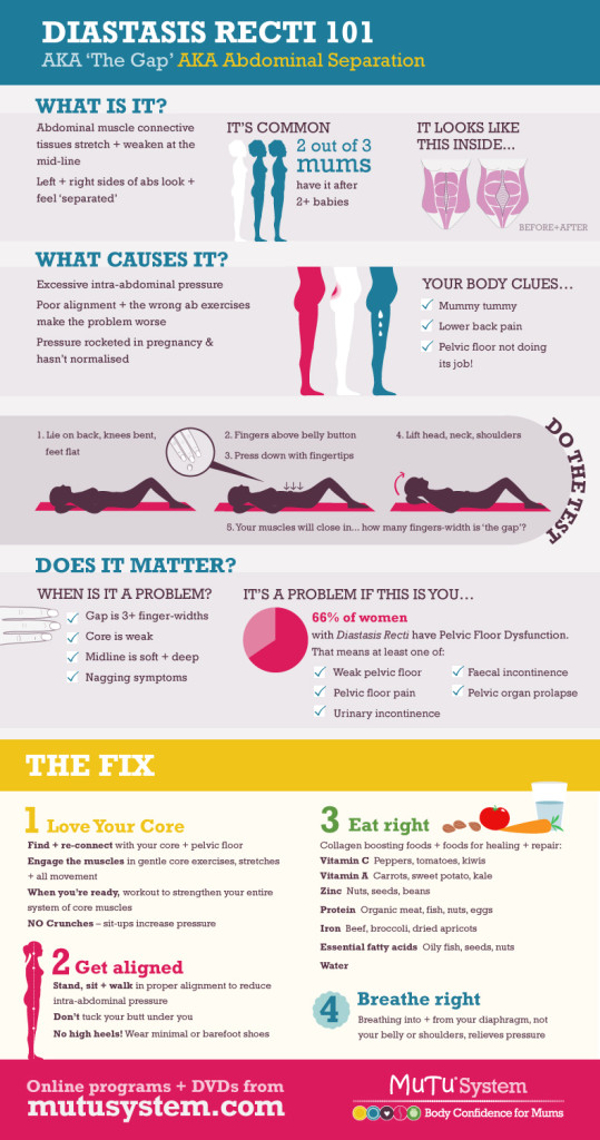Diastasis recti, a condition wherein a line or ridge is developed on the belly of a person, is caused by weak abdominal muscle. Diastasis recti are common to pregnant women with more than one pregnancy as well as in new-born infants. This is not a dangerous condition and can be treated with simple surgery.
The most common symptom of the condition in women is a line just under the breastbone down the belly button. The line becomes more noticeable if the patient gets physically active; when engage in activities that involve abdominal muscles.
In new-born infants, signs and symptoms of the condition may be visible as their abdominal muscles are not developed enough to prevent the symptoms from arising. The line in the belly of infants is highly visible, especially if they move from a lying position to sit up. But, the line may not be visible at all when the child is lying down. Also, the line or the ridge will eventually disappear as the abdominal muscles of infants develop.
Women who have multiple pregnancies are more likely to develop diastasis recti than women who have one or single pregnancy. A line develops on the belly as the muscles in the uterus are stretched multiple times allowing excess skin to develop in the belly just above the uterus. Women who have multiple pregnancies and developed Diastasis recti will see that the condition becomes worse as pregnancy progresses. Severe cases of the condition include a line on the outline of the uterus just above the abdominal wall. The condition is also present in the newborn infant.
Diastasis Recti Treatment
Rest is the most common treatment for Diastasis recti. It is highly important to keep away from activities that may pull or stretch the abdominal muscles apart such as lifting heavy objects and exercises such as sit ups. Your diastasis recti is very severe where you can place your finger between the cavity that has formed due to tissue separation, surgery may be required.
While the abdominal tissues bring back diastasis recti together, surgery may be required for more severe cases of the condition. During surgery, small incisions are placed in the abdominal wall. The abdominal tissues are pulled together and then stitched back into position. Although surgery, like other treatments can develop complications like infection, this will pull back the tissues together, aside from the abdominal muscle, so your belly will have a firmer look. Surgery is Diastasis recti treatment mostly recommended by doctors as this is the most effective approach to firming up the stretched fascia tissue.
The effectiveness of exercise and surgery in diastasis recti treatment has been long debated. Physical therapists recommend patients to exercise in order to treat the condition, but doctors highly recommend surgery. Hence, it is highly important that you get information from both sides before making your final decision in which treatment is the best for you. When you choose surgery, your insurance will cover the cost of diastasis recti surgery as it is considered as cosmetics.
